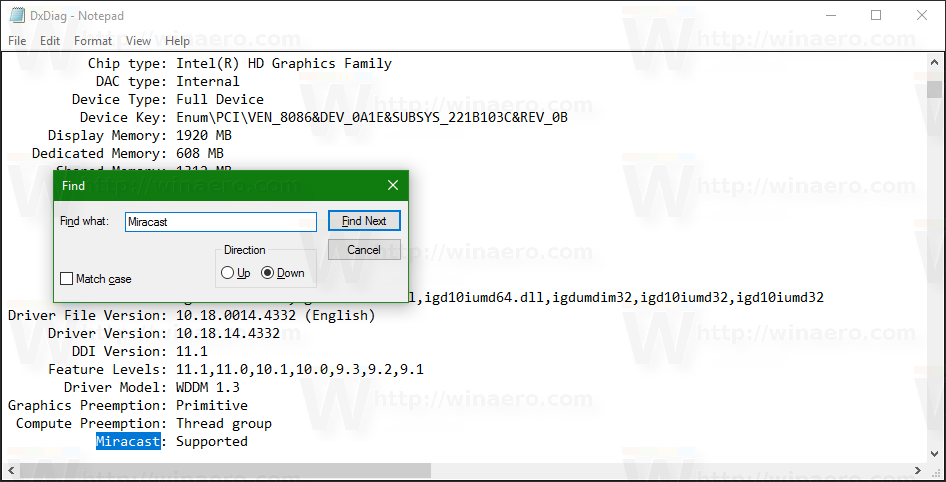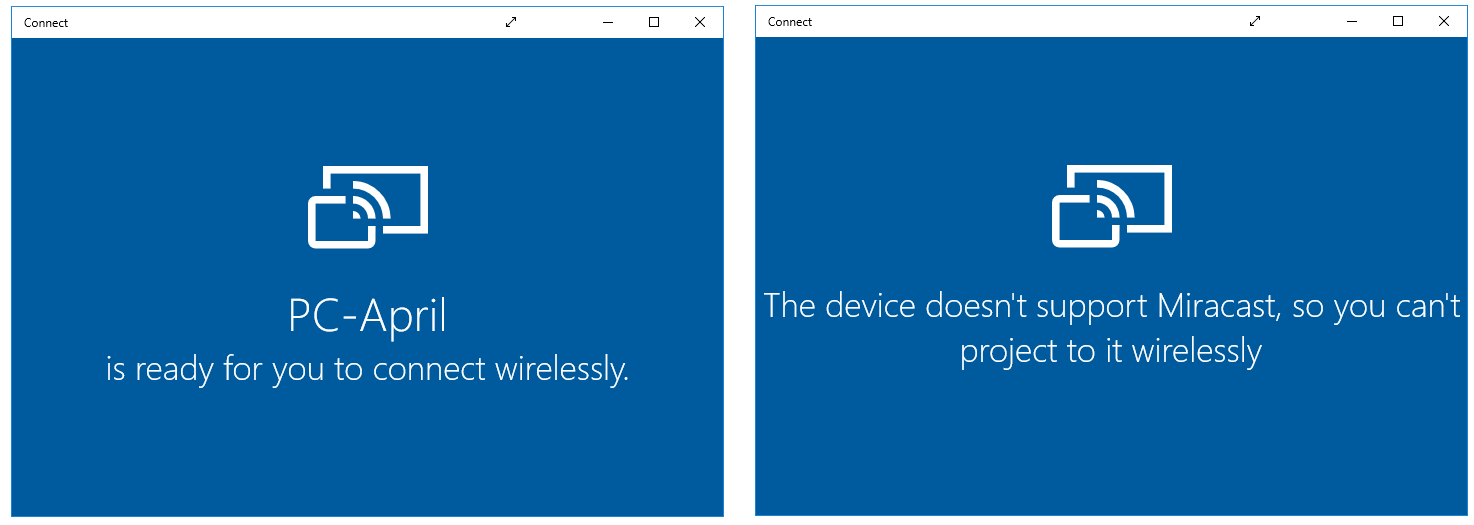LetsView requires the Miracast feature to be enabled when Android users connect to computers using the built-in wireless display function. Here are the solutions to “Miracast is not supported on your PC”.
How to Fix “Miracast is Not Supported on Your PC” Issue
There are no required changes to the wireless drivers or hardware on a PC. This also works well with older wireless hardware that is not optimized for Miracast over Wi-Fi Direct. Windows automatically detects when a receiver supports this functionality and will send the video stream over the existing network path when applicable. Both your Windows 10 computer (PC, laptop, or tablet) and device (TV, projector, or streaming media player) must support Miracast to be able to project your computer's screen to the device. The device (TV, projector, or streaming media player) must support Miracast, and have Miracast turned on. The first step you need to do is to check if your device supports the Miracast on Windows 10. You can follow the steps below to do. Press Win + R keys to open the Run dialog box and then type dxdiag and hit Enter.
Prerequisites for Miracast on PC

The Miracast feature requires the following specifications:
- Your PC is running Windows 8.1 and later.
- There is wireless network card on your PC and supports the Miracast function. You can also intall a Wireless network card that supports this feature.
- Your graphics card supports the Miracast function.
- Connect your phone and PC to the same WiFi network.
Check if your graphics card supports Miracast
- Press “Win” and “R” simultaneously. Enter dxdiag from the popup.
- Click on “Save All Information” on DirectX Diagnostic Tool.
- Then a new txt file will appear. Open the file and check if Available is displayed under Miracast. If both show Available and Supported, it means the Miracast function is supported.
Update graphics card driver
If it doesn’t display as “Available”, you need to update your PC’s graphics card. Here is a detailed guide.
- Right click on “This PC” and choose “Properties”. Click on “Device Manager”.
- Click on “Display adapters”.
- Right click on the graphics card driver and choose “Update driver”.
Check if it is supported by Wireless network card
- Right click on the Start menu button, choose “Windows PowerShell”.
- Input Get-NetAdapter | Select Name, NdisVersion and press “Enter”.
- Check the number on WLAN. It means the Miracast function is supported when the number is greater than or equal to 6.40.
Update wireless network card driver
If the number is less than 6.40, you need to update the wireless network card drivers.
- Right click on “This PC” and choose “Propeties”. Click on “Device Manager”.
Click on “Network adapters”.
- It is the wireless network card with Wireless LAN. Right click and choose Update Drivers.
The technology has come a long way. Earlier, we used to connect our devices using cables, but now, many devices can be connected wirelessly. One such wireless technology is Miracast. Using Miracast, you can connect your computer’s screen to a TV screen, projector and media players. This is basically HDMI over Wi-Fi. To connect the devices the other device must be a Miracast compatible device, that’s it. This technology has become very useful in the past few years. People use it for presenting slide shows, to playing games and watching movies on the large TV screen.
You can do the same. You might have this technology already on your computer, and you might not know it. But, if your computer’s a little old or this tech did not come preinstalled on your system, there is another way to fix it. How? We will show you how to setup Miracast, along with what to do if it stops working.
Check Your Computer for Miracast Support
Before beginning with the setup, you need to check if your system supports Miracast or not. Follow the steps to find out.
Step 1. Right-click on the Start menu button and select Run.
Step 2. Type dxdiagand click on OK.
Step 3. The last step will open the DirectX Diagnostic Tool. Here, click on Save All Information.
Step 4. Select the location where you want to save the file and click on Save.
Step 5. Now, go to the location where you saved the file in the last step and open it. Check for the status of Miracast as shown in the screenshot below.
If the status says “Available, with HDCP”, it means your computer is Miracast compatible. But, what if the status doesn’t say Available? If it says so, it means your device is not Miracast compatible. We have discussed the fix to this problem in this article at the end.
How to Setup Miracast in Windows 10
After making sure your computer supports Miracast, we will now begin the setup of Miracast. Follow the steps to do so.
Step 1. Right-click on the Start button and select Settings.
Step 2. Click on Devices.
Step 3. Under Bluetooth and other devices, go to Add a device.
Miracast Windows 10 Not Working
Step 4. Select Wireless display or dock.
Step 5. Here, look for your device and click on it to connect. The device must be turned on to connect, so make sure it’s ON. When the device is connected, you can configure the displays by pressing Windows Key + P.
How to Fix Miracast not working on Windows 10
If you are one of the users who did not have the Miracast Status as Available, there’s no need to worry. You can still use Miracast on your computer to project display wirelessly. How?
There can be one of the two reasons behind this issue:
Miracast Not Supported By Wifi Driver Windows 10 Media Player
1. Did you Upgrade your Computer to Windows 10?

Miracast Not Supported By Wifi Driver Windows 10 Pro
Is the Windows 10 installed on your computer is an upgrade from Windows 8 or other previous OS? If yes, that means Windows 10 on your device might not have the inbuilt Miracast support. If you want to use the Miracast technology on your computer, you will have to buy a Miracast Adapter. Miracast Adapters are easily available in the market.
Install Drivers For Miracast Windows 10
2. Your Computer had Windows 10 pre-installed?
If your computer came with Windows 10 pre-installed, then you should have no problems using Miracast. The problem is probably due to outdated Wi-Fi or Display Adapter’s drivers. Simply update the drivers and you will be free of this issue. You can update the drivers from your computer’s manufacturer’s website.



